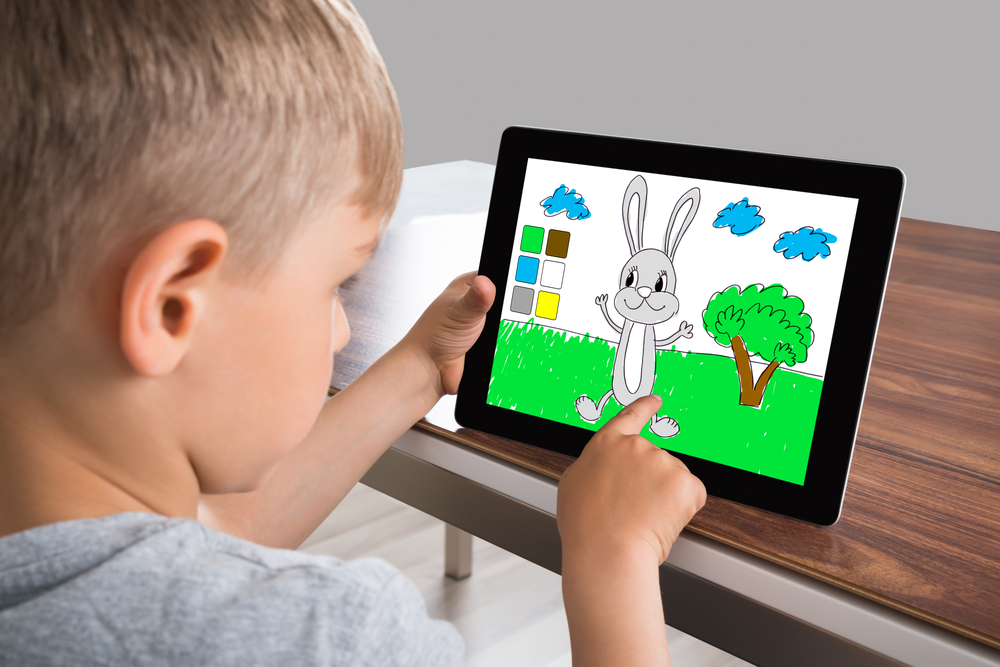As a parent, witnessing your child not using functional speech can be overwhelming at first.
The challenges that kids with autism usually face are concerning communication and interaction in their daily life. Awkward social interactions are not uncommon for them and, soon, it becomes a part of their daily life.
Fortunately, research shows impressive advancements in support for individuals with ASD by using technology.
There are plenty of mobile apps that allow children with disabilities to learn, function independently, increase language capacity, improve their communication, and strengthen their vocabulary all at the same time.
It allows them to find a way around challenges and develop their social skills.
Let’s take a look at some similar ways how technology can help your autistic child:
1. Technology And Flexibility
Devices like tablets, iPods and iPads, etc are particularly simple to use and portable. These handheld devices can be carried by the kids wherever they go with ease and do not need extra effort.
There are also smaller and lighter tablets that serve as the perfect companion for children.
Going on a long road trip with your child? No problem, switch to the Language Therapy For Kids – MITA App on your iPad for their daily training.
Even on a holiday, their language goals will be completed for the day!
2. Technology Ensures Better Communication
Written communication like texting and emailing to friends and family can be helpful for kids with autism. This type of non-verbal communication is also a better alternative to writing by hand since it can be a challenging motor skill for them.
Proloquo2go is a fun app for children, their therapists and families that is particularly nonnverbal and encourages language development.
Multiple applications allow kids to improve their communication by offering visual timetables, schedules, symbols, etc.
The gap between an individual and a seemingly difficult life can be bridged.
Hence, by using touchscreen tablets, phones, laptops, etc, the kids can communicate freely with loved ones.
3. The Accessibility Factor Of Technology
Using a touchscreen is effective because there is no hassle of keyboards, like a PC. It’s a lot less work to tap and swipe.
So technology becomes the necessary bridge between the individual and exploring the virtual world.
Virtual reality rooms also play a huge role in children being able to choose the kind of experiences that they want to partake in and when.
4. Visual Learning Through Technology
It is no surprise that engaging graphics can help retain knowledge and information for a long time.
You can find colourful monsters on the Endless Reader application, teaching words and promoting reading skills through interactive sounds!
Vivid computer graphics are being applied to educate and inform children with autism.
Computer training and computer-aided instructions are also integral to their visual learning process.

5. Technology With Kid-Friendly Interfaces
There are plenty of mobile applications available in the e-market that enhance your kid’s learning through friendly user experiences.
Online communities and virtual reality also play a part in introducing your child to different worlds within the virtual space.
By finding a way around interaction issues, technology has been able to initiate and extend conversations that were not earlier possible.
6. Technology That Promotes Leisure Activity
Apart from being informative, technology is also a great way to tell stories.
Storybooks aside, technology can serve the purpose of telling your kids stories with interactive activities and features that can enhance the experience for them.
Lots of applications and websites offer unique and immersive experiences.
7. Customization In Technology
Some of these apps have a robust library of images and videos that are extremely helpful for kids who are on the spectrum.
Since the applications are specially designed for them, they have inherent intuitive features that allow the visual learners to have a voice of their own.
Conclusion
The use of technology is constructive for human beings in the way they respond and adapt to their environment.
These technological advances play a huge role in enhancing the lives of individuals with ASD.
Do you know someone who is on the spectrum? If yes, what helps them the most?

